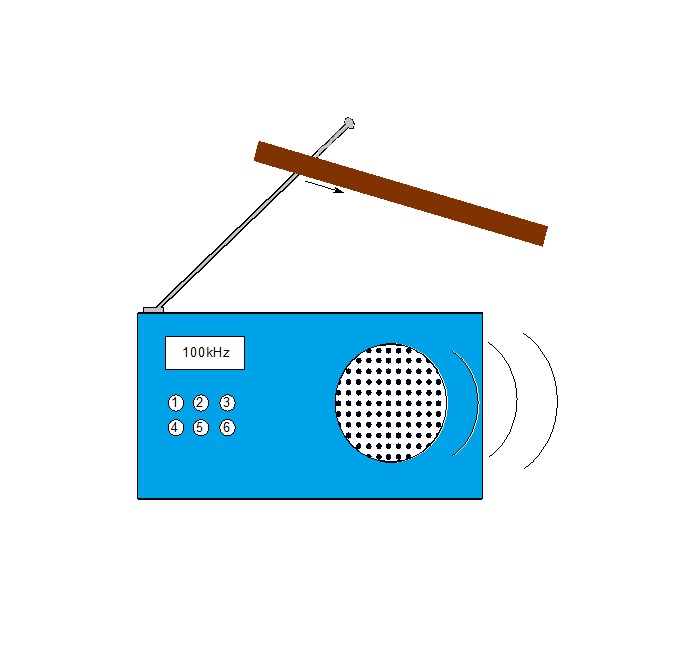015 – Detecting Electrical Charge
Radio as a charge detector
Antenna as lightning rod
Introduction to:
- Triboelectricity
- Electric charge
Material:
- Transistor radio with external antenna
Friction mecanism:
- Plastic rod (e.g. PVC pipe) / ruler made of plastic
- Woolen cloth (e.g. scarf, sweater) or sheepskin
Setup:
- Tune the radio to a frequency without a transmitter.
- Turn the speaker up to full volume.
- Charge the plastic rod electrically with the woolen cloth.
Execution:
- Sew the plastic rod of the antenna close.
- Strip off the plastic rod on the antenna.
Observation:
- The noise in the speaker becomes weaker.
- “Cracking noises” can be heard from the loudspeaker.
Explication:
- The friction between the plastic rod and the woolen cloth separates electrical charges, so that the plastic rod becomes electrically charged.
- The charges on the plastic rod create an electric field. This interferes with the electromagnetic waves that the radio receives.
- The potential difference between the plastic rod and the antenna is a few thousand volts and leads to flashovers when touched. These are converted into “cracking sounds” by the radio. In this process, the charges flow from the plastic rod via the antenna to Earth.
Note:
- Tests with frictional electricity do not work in humid air or with damp material.
